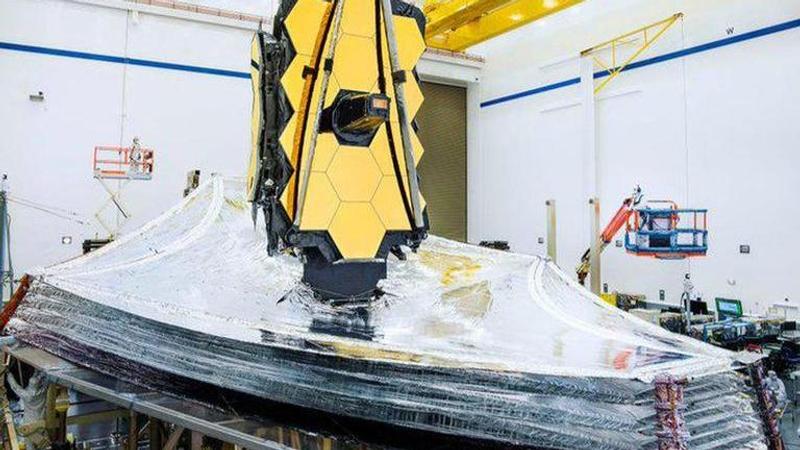Published 16:14 IST, January 3rd 2022
EXPLAINED: How are sunshields an integral part of James Webb Space Telescope?
Made out of Kafton each of the sunshield layers is coated with aluminum whereas the two outermost ones have a coating of silicon.

Advertisement
Developers of the James Webb Space Telescope have finally deployed its extremely precious sunshields, thereby giving the telescope the shape of a diamond. Engineers from NASA, the European Space Agency (ESA) and the Canadian Space Agency (CSA) are now working towards tensioning the sunshields before the telescope comes to life later this year. The process of completely unfolding the silver-coloured tennis court-sized sheets was a nail-biting experience for the scientists as it is this instrument of Webb upon which a lot depends.
1/ While we wait for sunshield tensioning to take place, let's look at this #WebbOfTechnology piece, the sunshield 👇
— ESA Webb Telescope (@ESA_Webb) January 2, 2022
📷 NASA/Chris Gunn pic.twitter.com/ITji2DQNCO
Here's why Webb's sunshields are so important
As we know by now, the Webb telescope has been designed to observe the universe in infrared wavelengths of light, one that is said to have clues about the early universe. However, the sunshields also serve the purpose of protecting Webb's instruments from the telescope's own emission, so as not to confuse them with the signals from, say, an exoplanet. And as the name suggests, the sunshields also have a job to protect Webb's instruments from the Sun's heat, as the instruments ought to be extremely cold to detect infrared signals.
According to the ESA, the sunshields will allow Webb's instruments to operate at a temperature of -233 degrees celsius. In addition to this, the mid-infrared instrument (MIRI) will be further cooled down to -266 degrees celsius using a cooling system called 'cryocooler'. Explaining why Webb has five layers of sunshields instead of just a single thick one, ESA said that each of these layers has been designed to be cooler than the last one. Since there is a vacant space between each of the layers, the heat trapped by the sunshields between the layers radiate out and does not allow them to reach the instruments. Interestingly, each of the layers has been stacked close at the center and far apart at the edges to vent out the heat in space.
(Image: Twitter/@ESA_Webb)
Made out of Kafton, a special material with thermal properties, each of the layers is coated with aluminium whereas the two outermost ones have a coating of silicon on the sun-facing side of the sunshields to reflect maximum light. Talking about the tensioning of the sunshields, ESA says that all the layers must be precisely separated in space as all of them has a specific thickness and size.
Image: Twitter/@ESA_Webb
Updated 16:14 IST, January 3rd 2022




